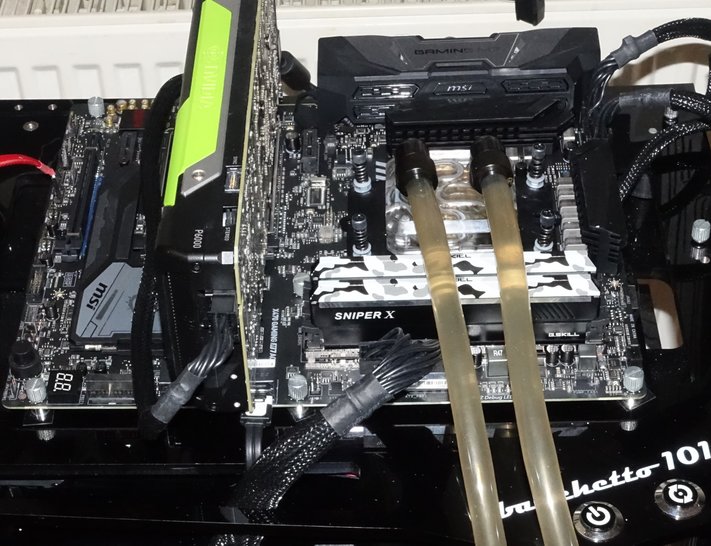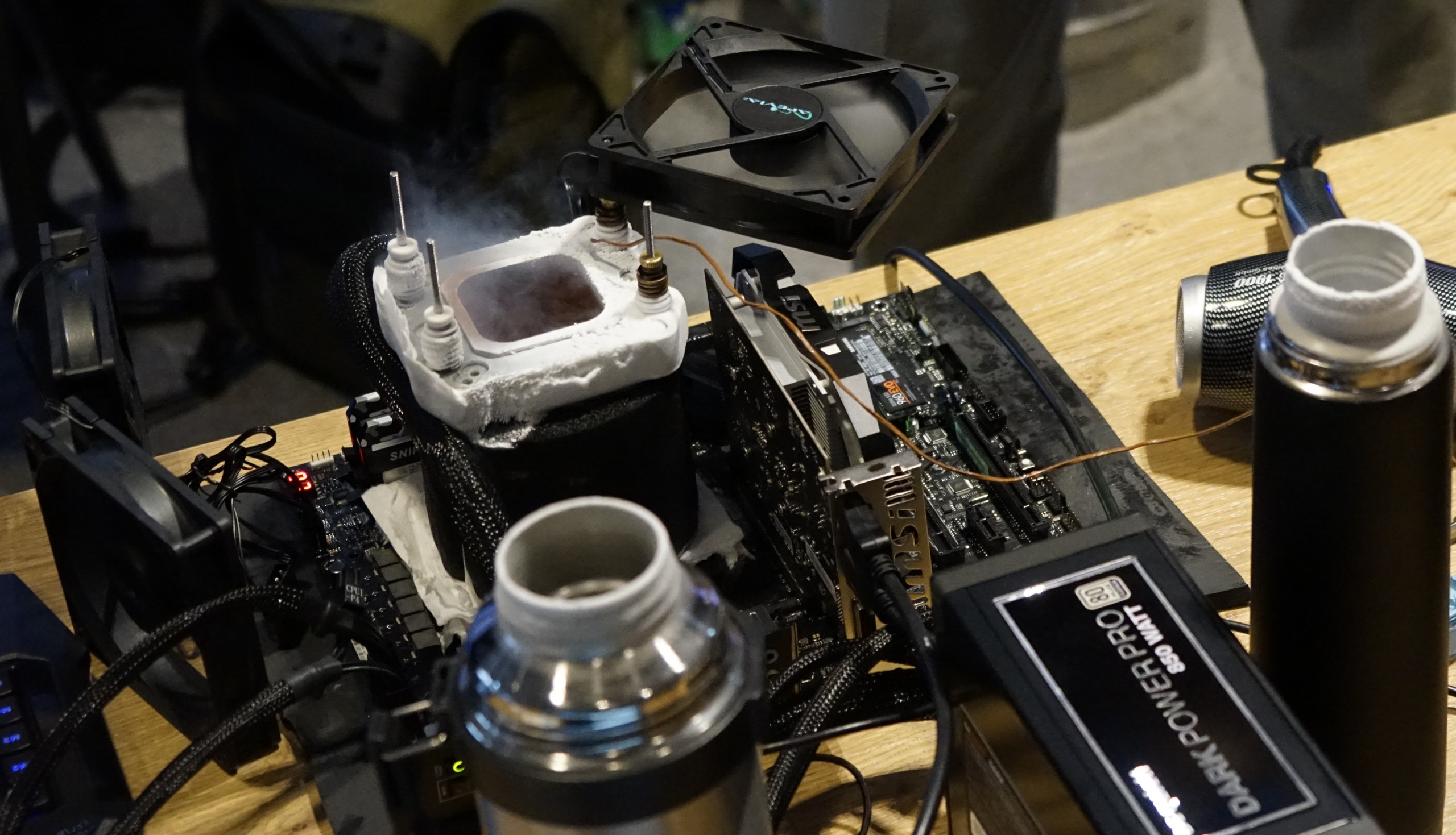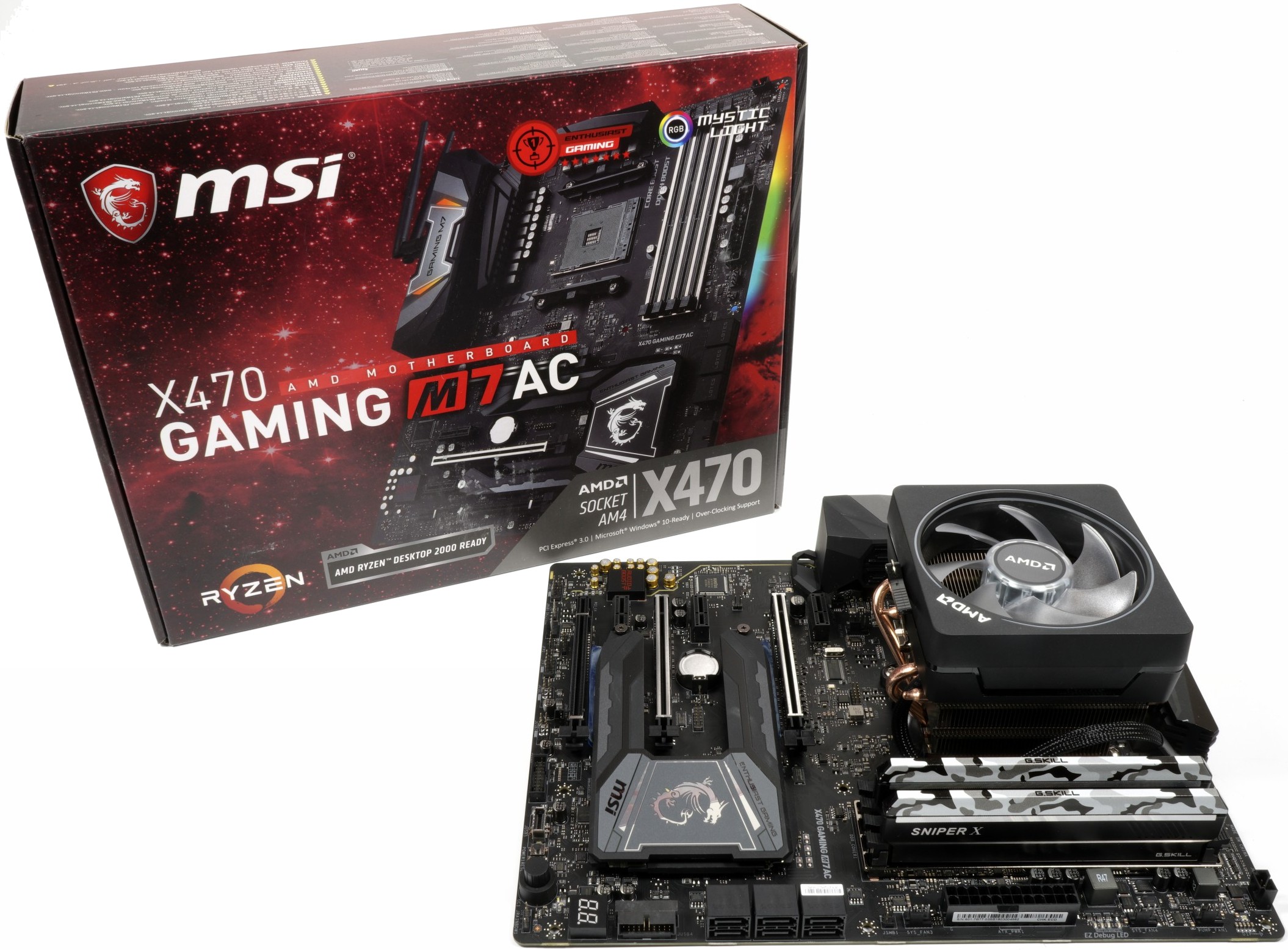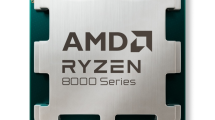Overclocking
We conducted our game benchmarks in the US laboratory while our application, power consumption and temperature measurements were carried out in our Germany laboratory.
In the US laboratory, we operated the Ryzen 7 2700X and the Ryzen 5 2600X with a Corsair H115i AIO compact water cooling system. We were able to achieve a 4.2 GHz all-core overclock with 1.3785 VCORE, 1.2V SoC voltage and the default settings of the Load Line Calibration. However, we were unable to reach 4.3 GHz without exceeding the maximum long-term voltage recommended by AMD of 1.40V, which is why we completed all OC tests at 4.2 GHz clock speed. We have had to measure up to 90°C during the extended AVX test, so we recommend either a potent AIO solution or an open loop water cooling system for overclocking.

In the German laboratory, the CPU was overclocked cleanly and stable on all cores up to 4.35 GHz, but 1.45 volts were needed for this, the AMD's limits slightly exceeded. If you decide on the more extreme way with LN2, then the Ryzen 7 2700X will run on 5.8 GHz with a little luck.

The first-generation Ryzen processors don't have as much memory overclocking capacity, so we're still testing the overclocked X370 platforms with DDR4-3200. However, the X470 platform with the Ryzen 7 2700X was remarkably stable with higher memory overclocking. We then opted for DDR4-3466 with 14-14-14-14-34 timings for the OC benchmarks, but we are confident that with a little more fine tuning you can achieve even higher memory overclockings. We also run our overclocked Intel processors in fairness on DDR4-3266.
Important: Spectre and Meltdown
Unfortunately, our performance measurements today do not include the spectre 2 motherboard firmware updates for the Intel platforms and AMD's X370, as we have deliberately waited for pending AMD patches to ensure a level playing field. Unfortunately, as is so often the case, there is probably a mistake in the communication chain. AMD announced last week that it would soon be making the implementation available to motherboard manufacturers and OEMs, who usually need time to incorporate the microcode into the BIOSe and publish it. We also regularly searched the websites of the motherboard manufacturers for the firmware updates for our X370 platforms and spoke to the manufacturers' contacts there after AMD made the announcement. But no new BIOSes were and still are not available.
Unfortunately, we were only alerted by an insider the day before the embargo lift that the firmware of our X470 motherboard already has the microcode for the Spectre 2 patch, which did not give us enough time due to the late timing, retest all Intel platforms with the patches.
We would like to point out that the real performance difference between the two Ryzen generations could well be a little larger than in the following test results, as we have tested the first generation with X370 boards and so far it has been there are no official patches yet that may could have a negative impact on overall performance.
However, we have provided all test systems with the latest Windows updates and patches, and we have also provided older results with new measurements after the software updates.
In the interests of fairness, we will not update the hardware of all of our test platforms until the full solutions against Spectre 2 are equally available to Intel and AMD and then re-enlist.
Test Setup
AMD is also working on a Precision Boost Overdrive feature similar to the Multi-Core Enhanced Turbo (MCE) feature that allows Intel's K-Series processors to run over all cores at any time with the maximum Turbo Boost. The setting on Intel platforms changes the clock rate and voltage of the CPU to deliver higher performance, which is basically a factory overclocking.
AMD's Ryzen Master 1.3 software does not currently allow you to enable the feature within the operating system, but as with many motherboards for Intel processors, AMD's Precision Boost Overdrive is enabled by default in the motherboard firmware. We've tested the feature extensively, but we've also found that it doesn't currently bring any significant performance gain. At the moment, therefore, we will run all tests with the function disabled, just like with MCE. As soon as we learn more or the feature is fully active, we'll have more details to follow.
MSI X470 Gaming M7 AC
Our MSI X470 Gaming M7 AC has the ATX format and features a PCI Express 3.0 slot with full x16 connection, an x8-connected slot, and another PCI Express 2.0 slot with x4 connectivity. The four RAM banks can theoretically accommodate up to 64 GB ddr4 memory modules with a clock rate of up to 2,933 MHz and can also clock significantly higher via OC.
The Socket AM4 motherboard also provides two M.2 slots with PCIe connectivity. M.2 SSDs connected via four PCI Express 3.0 lanes, in conjunction with the NVM Express Protocol (NVMe), support data transfer rates of up to 32 Gbps, making them up to eight times faster than SATA 6G hard drives in theory.

A USB 3.1 Type-C port can be found on the I/O aperture of the MSI X470 Gaming M7 AC. This port is particularly thin and can be plugged on both sides. USB 3.1 or USB 3.1 Gen 2 achieves maximum speeds of up to 10 Gbps per port and supports the fast charging function of smartphones and tablets. This, in turn, is interesting for the YouTube generation and thirsty mobile devices.
A special feature is the integrated RGB Mystic lighting, which enables customizable RGB lighting effects at several lighting zones and which must be controlled by separate software. For controlling and automatically synchronizing additional RBG lighting, the MSI X470 Gaming M7 AC has two internal headers for static and one for addressable RGB components. Two antenna connectors are integrated on the back for the integrated AC Wi-Fi module (Intel AC 8265).
Test systems
| Configurations and equipment | |
|---|---|
| Hardware |
AMD Socket AM4 400 AMD Ryzen 7 2700X, Ryzen 5 2600X MSI X470 Gaming M7 AC 2x 8GB G.Skill FlareX DDR4-3200 en DDR4-2667, DDR4-3466 AMD Socket AM4 300 FIRST-generation AMD Ryzen 7 and Ryzen 5 MSI X370 Tomahawk 4x 8GB G.Skill TridentZ DDR4-3200 @3200Intel LGA 1151 (Z370): Intel Core i7-8700K, i5-8600K, Core i5-8400 MSI Z370 Gaming Pro Carbon AC 2x 8GB G.Skill FlareX DDR4-3200 en DDR4-2400, DDR4-2667, DDR4-3466 Intel LGA 1151 (Z270) Intel LGA 2066 System |
| Cooling |
Germany Alphacool Ice Age 2000 Chiller Alphacool Ice Block XPX Thermal Grizzly Kryonaut (For Cooler Switch)U.S. Corsair H115i |
| Monitor | Eizo EV3237-BK |
| PC Case |
Lian Li PC-T70 with Extension Kit and Mods Configurations: Open Benchtable, Closed Case |
| Power Consumption Measurement |
Contact-free DC Measurement at PCIe Slot (Using a Riser Card) Contact-free DC Measurement at External Auxiliary Power Supply Cable Direct Voltage Measurement at Power Supply 2x Rohde & Black HMO 3054, 500 MHz Digital Multi-Channel Oscilloscope with Storage Function 4x Rohde & Black HZO50 Current Probe (1mA – 30A, 100 kHz, DC) 4x Rohde & Schwarz HZ355 (10:1 samples, 500 MHz) 1x Rohde & Schwarz HMC 8012 Digital Multimeter with Storage Function |
| Thermal Measurement |
1x Optris PI640 80 Hz Infrared Camera + PI Connect Real-Time Infrared Monitoring and Recording |
| Acoustic Measurement |
NTI Audio M2211 (with Calibration File, Low Cut at 50Hz) Steinberg UR12 (with Phantom Power for Microphones) Creative X7, Smaart v.7 Custom-Made Proprietary Measurement Chamber, 3.5 x 1.8 x 2.2m (L x D x H) Perpendicular to Center of Noise Source(s), Measurement Distance of 50cm Noise Level in dB(A) (Slow), Real-time Frequency Analyzer (RTA) Graphical Frequency Spectrum of Noise |
- 1 - Ryzen Reloaded
- 2 - Das X470 Chipset und Ryzen Master 1.3
- 3 - Cache und Speicher-Performance, IPC
- 4 - Overclocking, Spectre und Test-Setup
- 5 - Gaming: CPU Performance
- 6 - Gaming: Ashes of the Singularity Escalation
- 7 - Gaming: Civilization VI
- 8 - Gaming: Warhammer 40K: DoW III
- 9 - Gaming: Grand Theft Auto V
- 10 - Gaming: Hitman (2016)
- 11 - Gaming: Middle-earth: Shadow of War
- 12 - Gaming: Project Cars 2
- 13 - Gaming: Far Cry Primals
- 14 - Workstation: GPU Performance
- 15 - Workstation: CPU Performance
- 16 - XFR2 vs. manuelle Übertaktung
- 17 - Leistungsaufnahme
- 18 - Temperaturen und Lautstärke
- 19 - Zusammenfassung und Fazit
































Kommentieren